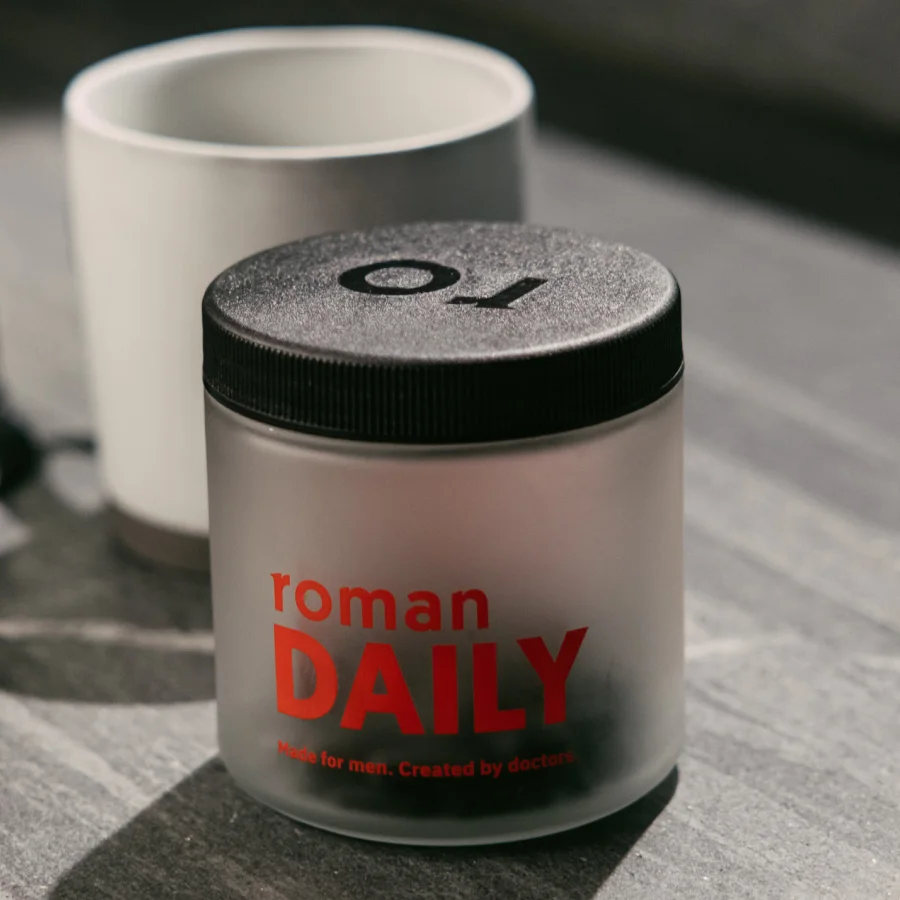Here's what we'll cover
Here's what we'll cover
Folate, also called vitamin B9, is an essential vitamin your body needs to function properly. It helps your body make DNA and RNA—which are essential for your cells' ability to function and reproduce—and helps your red blood cells mature correctly. You can get natural folate through the foods you eat or from its synthetic form, folic acid, which is added to supplements and certain foods.
Folate deficiency is when the amount of folate in your body falls below a certain level. While it is relatively uncommon, some groups are at a greater risk of developing a deficiency, like those who consume a lot of alcohol (NIH, 2021).
Let’s look at the causes of folate deficiency and how much of the vitamin you need.
What is folate deficiency?
When the body does not receive adequate amounts of folate through food or supplements, and its folate levels dip below a certain level, a folate deficiency can occur (Khan, 2021).
The total amount of folate in our bodies is typically between 15–30 mg, and about half of it is stored in the liver. The remainder of folate is in the blood and body tissues (NIH, 2021).
Healthcare providers can measure your folate levels through a simple blood test. If the reading is below a certain amount, you might not be getting enough folate. A level above 3-4 ng/mL usually means you’re getting enough of the vitamin, and a level below 2 ng/mL can mean that you are folate deficient (NIH, 2021; Khan, 2021).
Folate deficiency symptoms
The primary sign of folate deficiency is megaloblastic anemia, which stems from the body’s inability to produce normal red blood cells. People with megaloblastic anemia can have shortness of breath, lightheadedness, weakness, and heart palpitations (Hariz, 2021).
Often, folate deficiency develops slowly, and it can sometimes take 2–4 months to tell that someone is deficient in folate (Khan, 2021). In addition to low folate levels, low levels of vitamin B12 can also cause megaloblastic anemia. Healthcare providers usually test for both vitamin deficiencies if a person has megaloblastic anemia (Hariz, 2021; Khan, 2021).
Other symptoms of folate deficiency include (Khan, 2021):
Mouth ulcers
Mouth and tongue inflammation
Persistent fatigue, which is often the first symptom
Irritability
Folate deficiency during pregnancy
If pregnant women don’t get enough folate, the baby can develop neural tube defects. The neural tube is the portion of the developing embryo that will eventually become the brain and spinal cord. These defects can lead to severe health conditions like spina bifida, a disorder that can severely impact the nervous system and a person's ability to function in daily life (Singh, 2021).
Causes and risk factors
Most people consume adequate amounts of folate every day. But certain people are still at a higher risk of developing a folate deficiency due to specific health problems or medication use.
Non-Hispanic Black women are a specific population that is at a higher risk for folate deficiency in the United States. Women of childbearing age are also at a greater risk for folate deficiency due to the body’s increased need for folate during pregnancy. (NIH, 2021).
Finally, people who consume large amounts of alcohol are at risk of developing a deficiency. People in this at-risk group often have diets that are low in folate, and alcohol intake interferes with folate absorption. In this case, low folate levels often co-occur with low vitamin B12 levels (NIH, 2021).
People with malabsorption disorders like celiac disease or those with kidney or liver problems are also more likely to be folate deficient (Shulpekova, 2021; NIH, 2021).
Sometimes, people might be on a particular medication that interferes with the folate in their bodies. For example, people taking methotrexate, a medicine that helps treat cancer, might develop folate deficiency because of how methotrexate interacts with folate.
Other medications that might put people at risk for folate deficiency include those that prevent seizures and a medication called sulfasalazine that helps treat ulcerative colitis. People on these medications should consult their healthcare provider to determine their need for folic acid supplements (NIH, 2021).
Treatment and prevention of folate deficiency
Most of the time, oral supplements are enough to correct a folate deficiency. The amount you need will depend on how low your folate levels are and how severe your symptoms are.
If you can't tolerate oral supplements, your healthcare provider might give you folic acid intravenously or through injections into one of your muscles. Those who have malabsorption disorders, however, might need long-term treatment (Khan, 2021).
Prevention of folate deficiency is also important. Healthcare providers and dieticians should encourage people to eat a well-balanced diet to ensure they get an adequate amount of folate.
Fortunately, many foods naturally contain folate, including citrus fruits, green leafy vegetables, liver, beef, and eggs. Sometimes, manufacturers will add the synthetic form of folate, folic acid, to food as well. In the United States, many grain products like cereals, flour, and bread are fortified with folic acid (NIH, 2021; Khan, 2021).
There are also folic acid supplements that people can take. Public health authorities recommend that all women of childbearing potential receive a once-per-day folic acid supplement (400-800 mcg) to help lower the risk for neural tube defects in any developing children (US Preventive Services Task Force, 2017).
So, how much folate do you need?
Because folate is a water-soluble vitamin, your body doesn’t store it for very long, so you have to take it in regularly to ward off a deficiency. Adults over the age of 19 should shoot for 400 micrograms (mcg) a day; pregnant women should strive for 600 mcg a day; and breastfeeding women should get about 500 mcg of folate a day (NIH, 2021; Lykstad, 2021).
Of course, if you have a folate deficiency, your healthcare provider may recommend a different amount of the vitamin. If you suspect you may have a folate deficiency, reach out to a medical professional before supplementing with folic acid.
DISCLAIMER
If you have any medical questions or concerns, please talk to your healthcare provider. The articles on Health Guide are underpinned by peer-reviewed research and information drawn from medical societies and governmental agencies. However, they are not a substitute for professional medical advice, diagnosis, or treatment.
Hariz, A. & Bhattacharya, P. T. (2021). Megaloblastic anemia. [Updated 2021, Oct 11]. In: StatPearls [Internet]. Retrieved from https://www.ncbi.nlm.nih.gov/books/NBK537254/
Khan, K. M. & Jialal, I. (2021). Folic acid deficiency. [Updated 2021, Sept 28]. In: StatPearls [Internet]. Retrieved from https://www.ncbi.nlm.nih.gov/books/NBK535377/
Lykstad, J. & Sharma, S. (2021). Biochemistry, water soluble vitamins. [Updated 2021, March 7]. In: StatPearls [Internet]. Retrieved from https://www.ncbi.nlm.nih.gov/books/NBK538510/
Mercadante, A. A., Mohiuddin, S. S., & Dimri, M. (2021). Biochemistry, replication and transcription. [Updated 2021, Aug 27]. In: StatPearls [Internet]. Retrieved from https://www.ncbi.nlm.nih.gov/books/NBK540152/
Merrell, B. J. & McMurry, J. P. (2021). Folic acid. [Updated 2021, May 4]. In: StatPearls [Internet]. Retrieved from https://www.ncbi.nlm.nih.gov/books/NBK554487/
National Institutes of Health (NIH). (2021). Folate. Retrieved from https://ods.od.nih.gov/factsheets/Folate-HealthProfessional/#h3
Price, G. & Patel, D. A. (2021). Drug bioavailability. [Updated 2021, Sept 3]. In: StatPearls [Internet]. Retrieved from https://www.ncbi.nlm.nih.gov/books/NBK557852/
Shulpekova, Y., Nechaev, V., Kardasheva, S., Sedova, A., Kurbatova, A., Bueverova, E., et al. (2021). The Concept of Folic Acid in Health and Disease. Molecules (Basel, Switzerland), 26(12), 3731. doi: 10.3390/molecules26123731. Retrieved from https://www.ncbi.nlm.nih.gov/pmc/articles/PMC8235569/
Singh, R. & Munakomi, S. (2021). Embryology, neural tube. [Updated 2021, May 8]. In: StatPearls [Internet]. Retrieved Nov. 1, 2021 from https://www.ncbi.nlm.nih.gov/books/NBK542285/
U.S Preventive Services Task Force, Bibbins-Domingo, K., Grossman, D. C., Curry, S. J., Davidson, K. W., Epling, J. W., et al. (2017). Folic Acid Supplementation for the Prevention of Neural Tube Defects: US Preventive Services Task Force Recommendation Statement. JAMA, 317 (2), 183–189. Doi: 10.1001/jama.2016.19438. Retrieved from https://pubmed.ncbi.nlm.nih.gov/28097362/










